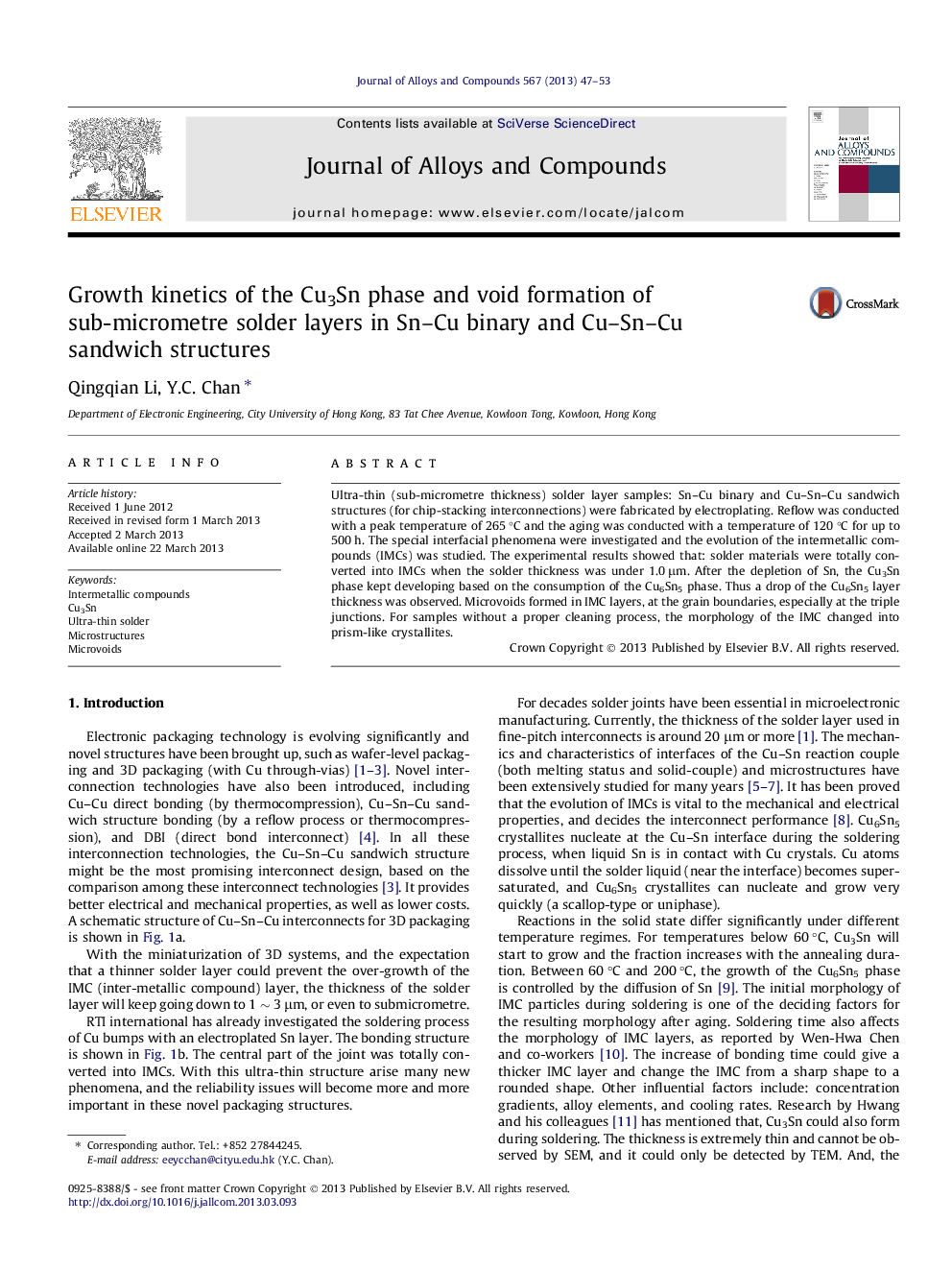| Article ID | Journal | Published Year | Pages | File Type |
|---|---|---|---|---|
| 1614141 | Journal of Alloys and Compounds | 2013 | 7 Pages |
Abstract
Ultra-thin (sub-micrometre thickness) solder layer samples: Sn-Cu binary and Cu-Sn-Cu sandwich structures (for chip-stacking interconnections) were fabricated by electroplating. Reflow was conducted with a peak temperature of 265 °C and the aging was conducted with a temperature of 120 °C for up to 500 h. The special interfacial phenomena were investigated and the evolution of the intermetallic compounds (IMCs) was studied. The experimental results showed that: solder materials were totally converted into IMCs when the solder thickness was under 1.0 μm. After the depletion of Sn, the Cu3Sn phase kept developing based on the consumption of the Cu6Sn5 phase. Thus a drop of the Cu6Sn5 layer thickness was observed. Microvoids formed in IMC layers, at the grain boundaries, especially at the triple junctions. For samples without a proper cleaning process, the morphology of the IMC changed into prism-like crystallites.
Related Topics
Physical Sciences and Engineering
Materials Science
Metals and Alloys
Authors
Qingqian Li, Y.C. Chan,
